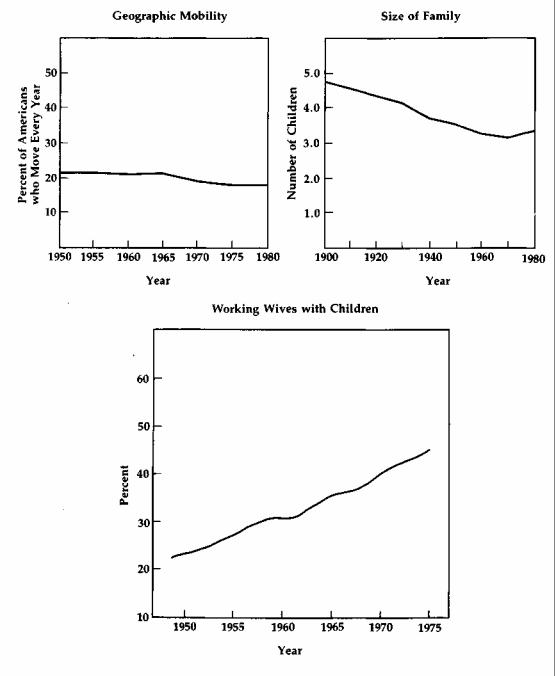
English_books / Beyond Language
.pdfPersonal Relationships |
87 |
2.Traditionally the man took the initiative to invite a woman on a date. This tradition is changing: it is becoming more common for a woman to ask a man out. The invitation does not always imply a romantic interest, but may be a way of "getting to know someone."
3.A changing custom that can create problems for both men and women is the question of "who pays for whom?" on dates. Traditionally men have paid the expenses on dates regardless of whether the couple's relationship is intimate or merely friendly. Currently some women feel more comfortable paying for themselves and may occasionally pay for the man. "Dutch treat" refers to a date where each individual pays for him/herself. There are no fixed rules for payment.
4.Gift-giving to friends is not marked by any fixed rules. Usually, gift-giving occurs on special occasions such as birthdays, anniversaries, weddings, and holidays. Outside of these occasions gift-giving is less prescribed:
Dates: Usually gifts are not exchanged with one's date or the parents of the date.
Dinner invitation at a home: Here it may be appropriate to bring a "token" gift such as flowers, wine, or candy.
Extended visits/host families: If one is invited for an extended stay in someone's home (two days or more), a gift is appropriate. This gift could be a nice present, a restaurant invitation, or even an offer to cook dinner for the family. (The host/hostess may refuse the offer.)
5. Friends may not always seek help and advice from other friends. Occasionally professional guidance will be sought to resolve personal problems. Professional guidance offers an alternative for people who do not wish to "burden their friends" or for people who need expert advice. Family, marital, and school counselors, private therapists, psychologists, and social workers are a few examples of people who offer professional guidance.
Supplementary Vocabulary and Phrases
to confide in someone |
to be engaged to someone |
to trust someone |
to let someone down to |
to rely on someone |
reciprocate common |
to feel comfortable with someone |
interests loneliness |
to empathize with someone |
fiance, fiancee affection |
to sympathize with someone |
|
to be hurt by someone |
|
to be disappointed in someone |
|

5
Family Values
What trends do you notice in these graphs? What do they say about the American family? Graphs can illustrate changes in the society but do not explain them. In order to understand the American family we need to go beyond statistics and explore values concerning children, young adults, the elderly, and family structure.
Child Raising
[A] |
Acculturation, which begins at birth, is the process of teaching new |
|
|
generations of children the customs and values of the parents' culture. |
|
|
How people treat newborns, for example, can be indicative of cultural |
|
|
values. In the United States it is not uncommon for parents to put a |
|
|
newborn in a separate room that belongs only to the child. This helps to |
|
|
preserve parents' privacy and allows the child to get used to having his or |
|
|
her own room, which is seen as a first step toward personal indepen- |
|
|
dence. Americans traditionally have held independence and a closely- |
|
|
related value, individualism, in high esteem. Parents try to instill these |
|
10 |
prevailing values in their children. American English expresses these |
|
value preferences: children should "cut the (umbilical) cord" and are |
||
|
||
|
encouraged not to be "tied to their mothers' apron strings." In the |
|
|
process of their socialization children learn to "look out for number one" |
|
|
and to "stand on their own two feet." |
|
[B] |
Many children are taught at a very early age to make decisions and be |
|
responsible for their actions. Often children work for money outside the |
||
|
||
|
home as a first step to establishing autonomy. Nineor ten-year-old chil- |
|
|
dren may deliver newspapers in their neighborhoods and save or spend |
|
|
their earnings. Teenagers (13 to 18 years) may babysit at neighbors' |
|
|
homes in order to earn a few dollars a week. Receiving a weekly allow- |
|
|
ance at an early age teaches children to budget their money, preparing |
|
|
them for future financial independence. Many parents believe that |
|
|
managing money helps children learn responsibility as well as appreciate |
|
10 |
the value of money. |
|
89 |
||
|
90 Family Values
Young Adulthood
[C]Upon reaching an appropriate age (usually between 18 and 21 years), children are encouraged, but not forced, to "leave the nest" and begin an
independent life. After children leave home they often find social rela tionships and financial support outside the family. Parents do not arrange
5 marriages for their children, nor do children usually ask permission of their parents to get married. Romantic love is most often the basis for marriage in the United States; young adults meet their future spouses through other friends, at school, at jobs, and in organizations and religious institutions. Although children choose their own spouses, they 10 still hope their parents will approve of their choices.
[D]In many families, parents feel that children should make major life decisions by themselves. A parent may try to influence a child to follow a particular profession but the child is free to choose another career. Some times children do precisely the opposite of what their parents wish in
5 order to assert their independence. A son may deliberately decide not to go into his father's business because of a fear that he will lose his autonomy in his father's workplace. This independence from parents is not an indication that parents and children do not love each other. Strong love between parents and children is universal and this is no exception in 10 the American family. Coexisting with such love in the American family are cultural values of self-reliance and independence.
The Elderly
[E]Societal and familial treatment of the elderly also reflects this independence and individualism. Their financial support is often provided by social security or welfare systems which decrease dependence on their family. Additionally, older people may seek their own friends rather than become too emotionally dependent on their children. Senior citizens centers provide a means for peer-group association within one's own age group. There are problems, however, with growing old in the United States. Glorification of youth and indifference to the aged have left many older people alienated and alone.
[F]Some families send their older relatives to nursing homes rather than integrate them into the homes of the children or grandchildren. This separation of the elderly from the young has contributed to the isolation of an increasingly large segment of society. On the other hand, there are many older people who choose to live in retirement communities where they have the companionship of other older people and the convenience of many recreational and social activities close to home.

The Nuclear and the Extended Family
IG] The treatment of the elderly can be further understood by distinguishing between nuclear and extended family structures. In the United States the nuclear family, which consists of the father, the mother, and the children, is considered "the family." The extended family, common 5 in other cultures, includes grandparents, aunts, uncles, cousins, nephews, nieces, and in-laws. The distinction between the nuclear and extended family is important because it suggests the extent of family ties and obligations. In extended families the children and parents have strong ties and obligations to relatives. It is common in these families to support
10older family members, to have intensive contact with relatives, and to establish communal housing.
[H]The American nuclear family usually has its own separate residence and is economically independent of other family members. Relatives are still considered "family" but are often outside the basic obligations that people have to their immediate families. When couples marry, they are 5 expected to live independently of their parents and become "heads of households" when they have children. It is not unusual in times of financial need for nuclear family members to borrow money from a bank rather than from relatives. Grandparents, aunts, uncles, and cousins, then, are not directly involved in the same way as they would be in an
10extended family structure.
91

Familial Roles
[I] In both nuclear and extended families, the culture imposes set roles upon parents. Traditionally the male has been responsible for financial support of the home and family members. The female has often been responsible for emotional support, childraising, and housekeeping. 5 However, among some people in parts of the United States, these parental functions are no longer fixed. The prescribed role of the man as "breadwinner" and the woman as housewife is changing. These changes include working mothers, "househusbands," and an increasing number of daycare centers for children. Yet, traditional roles may be preserved even in
10 households where the wife is working.
92

Family Values 93
[J] Some mothers work because of a financial need and not because of a desire to change their role from housewife to breadwinner. Others choose to work because they feel that financial support of the family should be shared by the husband and the wife. Still others are motivated 5 to work because of professional interests and a desire to contribute to society. More than 50 percent of American women are part of the labor force.
Stability and Change in the Family
[K] It is almost impossible to describe a "typical American family" because the United States is such a heterogeneous country. Although members of ethnic, racial, or economic groups may assimilate into the educational and employment system of the establishment, they often 5 maintain their cultural heritage within the home. Many families have strong religious or ethnic backgrounds which continue to contribute to the preservation of the close-knit extended family. At one time, traditional roles and religion had a much stronger influence on the nuclear family. Now economic conditions, societal attitudes, and job mobility in 10 the United States compete with traditional influences.

94Family Values
[L]Changes in the American family structure are evidenced by increased rates of separation and divorce. In certain areas of the country these trends have resulted in a growing number of "single-parent" families, remarried parents, and communal lifestyles. This does not indicate, 5 however, that the institution of marriage is crumbling. It is estimated that four out of five divorced couples eventually remarry other people. These shifts in family relationships may be interpreted as a breakdown or, alternatively, as an adaptation of the American family to changing roles, attitudes, and values. The changes, according to the more traditional
10 viewpoint, represent a breakdown in the family structure, a disintegration of values, and a decline of morality. Others, who believe it is necessary to adapt to a rapidly changing society, believe these shifts in family structure are inevitable and positive.
Family Values 95
Comprehension Questions"
Choose the best answer for the following questions. You will find the answer either stated directly or indirectly in the reading passage.
1.Graphs are used in the introduction because:
a.They indicate cultural trends influencing American family life.
b.Statistics are the best way to understand the American family.
c.Graphs are easier to understand than values.
2.In your opinion, which graph reveals the most significant sociological trend? Why?
a.Geographic Mobility
b.Size of Family
c.Working Wives
3.The expressions, "to cut the cord" and "to leave the nest" are used to show that: [A] and [C]
a.Children don't like their parents.
b.Parents don't feel close to their children.
c.Independence from one's family is an important personal goal in the United States.
4.Financial independence for American youth is one way of: [B]
a.Establishing autonomy.
b.Rebelling against parents.
c.Learning to deliver newspapers.
5.The fact that many elderly people choose to live alone and away from their children reinforces the idea that: [F]
a.The society is completely unconcerned with the elderly.
b.The elderly are wealthy enough to live alone.
c.The elderly are often not dependent on their grown children.
6.The authors distinguish between nuclear and extended families be cause: [G]
a.The distinction enables the reader to understand the importance of grandparents.
b.The distinction shows which kind of family is better.
c.The distinction suggests the extent of family ties and obligations.
7.The roles of man as "breadwinner" and woman as "housewife" are: [I]
*The capital letter in brackets refers to the corresponding paragraph in the reading.
94
a.Fixed roles in the American family.
b.Traditional roles which do not apply to the American family.
c.Undergoing change in the American family.
8.It is difficult to describe the "typical American family" because of: [K]
a.The heterogeneity of people in the United States.
b.The religious influences on individual families.
c.Economic conditions and job mobility.
9.The authors say that divorce rates: [L]
a.Can be interpreted as either a "breakdown" or an "adaptation" to changing social values.
b.Are a result of a "sick" family.
c.Have no relevance to the understanding of the family structure.
10.The statement, "Four out of five divorced couples eventually remarry other people" indicates that: [L]
a.Marriage is no longer popular.
b.Marriage is still highly valued in the United States.
c.Divorced couples represent four-fifths of the population.
Vocabulary List
Paragraph A |
Paragraph B |
Paragraph C |
Paragraph D |
childraising |
autonomy |
(no new words) |
career |
generations |
managing |
|
assert |
prevailing |
|
|
self-reliance |
instill |
|
|
|
Paragraph E |
Paragraph F |
Paragraph G |
Paragraph H |
elderly |
segment |
*distinguishing |
*residence |
peer |
*retirement |
ties |
*borrow |
glorification |
*convenience |
obligations |
|
indifference |
|
communal |
|
alienated |
|
|
|
Paragraph I |
Paragraph ] |
Paragraph K |
Paragraph L |
imposes |
professional |
heterogeneous |
trends |
prescribed |
*labor |
racial |
*crumbling |
preserved |
|
assimilate |
estimated |
|
|
heritage |
shifts |
breakdown adaptation
inevitable
*See vocabulary exercise E.
